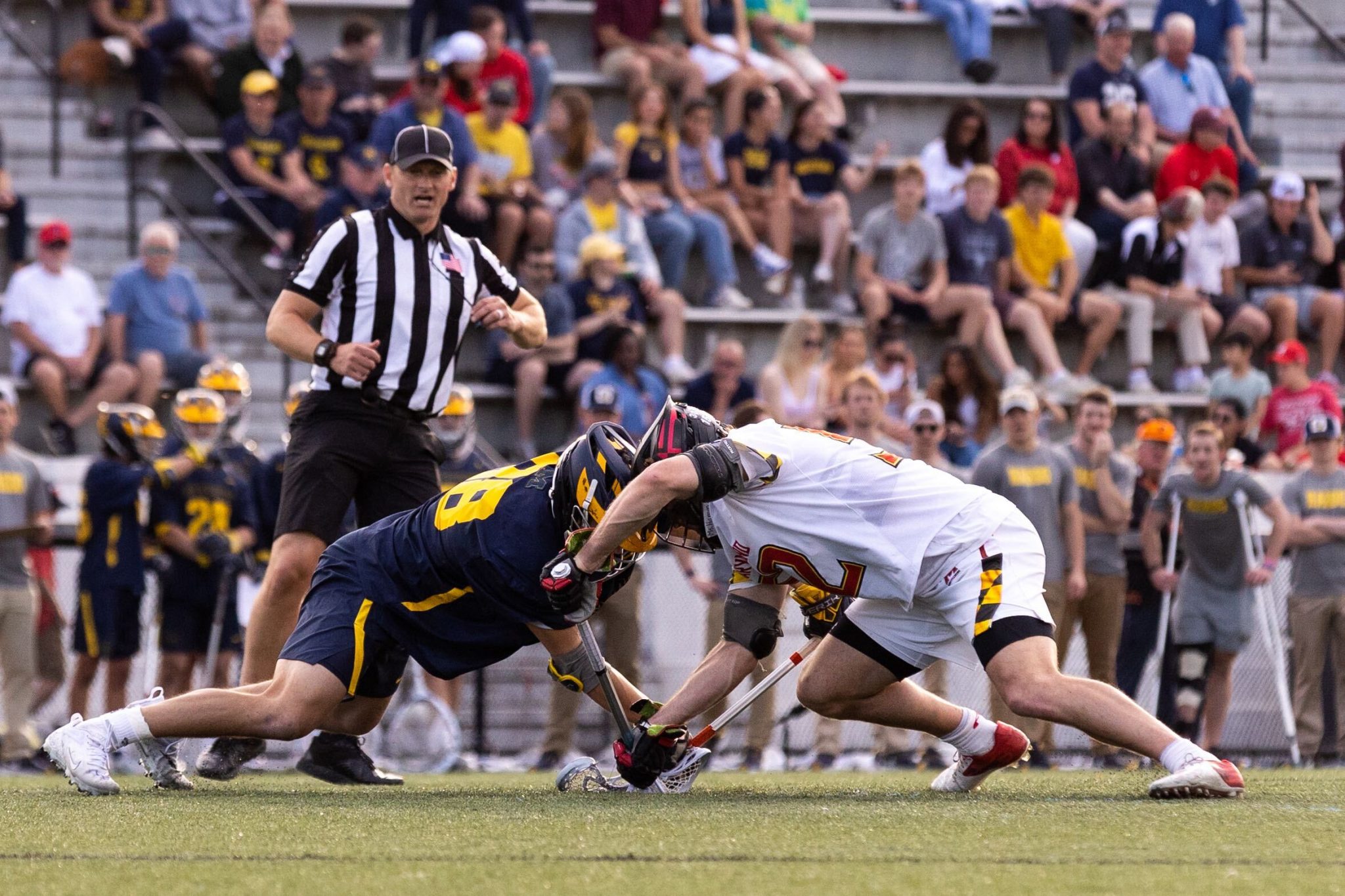In Maryland men’s lacrosse regular season loss to No. 8 Michigan in early April, the Terps pulled ahead early but then faltered in the center circle.
Coach John Tillman’s squad hoped for a better outcome in a rematch in the Big Ten tournament championship. Their start was similar, tied at two 11 minutes in.
Faceoff specialist Luke Wierman got off to an excellent start, winning each of his first five opportunities. Maryland remained steady with Michigan and the Wolverines were unable to string together multiple possessions.
But once the senior started to struggle, so did the Terps.
Wierman’s troubles provided a Michigan offense chances to go on multi-goal runs. The Wolverines’ offense ranks in the top 10 among all Division I schools in offensive efficiency, which measures goals per possessions. Wierman’s struggles also desperately limited crucial chances for a Maryland offense that places below the nation’s top 40 in offensive efficiency.
The Wolverines went on three separate runs of at least three scores while the Terps never strung together more than a goal at a time.
Wierman lost six of his final nine faceoffs in the first half, including four straight over a nine minute stretch in the second quarter. Michigan capitalized every single time.
[Maryland men’s lacrosse to host Army in first round of NCAA tournament]
“We really put an emphasis on not giving up big streaks like that,” defender Brett Makar said. “And when you have that you can’t stop the bleeding. They continue to gain momentum and it kind of turns into an uphill climb.”
One of Wierman’s worst stretches on Saturday came from the 11:37 mark to the 9:50 mark of the second frame.
His first fail in the span was due to a face-off violation. Michigan struck less than two minutes later. He got beat on the next opportunity, giving possession to Justin Wietfeldt — the Wolverines’ center circle specialist.
Wietfeldt screamed towards the Maryland cage, catching the Terps’ defense out of position for an easy score just four seconds after the face-off.
Wietfeldt dominated Wierman in the first matchup this season, winning 10 of 13 tries en route to the victory. The second encounter was no different.
The halftime break didn’t help Wierman, who won just two of his final six face-offs. He lost all three of the third-quarter face-offs, allowing Michigan to extend its six-goal lead and create a deficit that was too steep for the Terps to overcome.
Wierman entered Saturday having won 61 percent of his face-offs. But it wasn’t a fully successful season for the All-Big Ten First Team member; he finished five of the previous nine outings with a face-off conversion rate at or below 50 percent.
[Maryland men’s lacrosse blown out by Michigan in Big Ten tournament final defeat, 14-5]
The lack of possessions prevented Maryland’s offense from stringing possessions together. The Terps have had an offense predicated on runs — more than half of their goals this season have come amidst surges of at least three goals.
They didn’t have that luxury against the Wolverines. The few opportunities the Terps got didn’t usually result in goals.
Maryland converted on just 16.1 percent of its possessions and shot just 12.5 percent during the outing — both season-worsts.
A pair of underclassmen, sophomore Eric Spanos and freshman Braden Erksa, converted on just under half of their looks. But Tillman’s upperclassmen struggled mightily, missing all 27 of their shots.
In years past, the Maryland offense has had a go-to scoring option like Logan Wisnauskas and Jared Bernhardt when it needed to settle down. No such option exists this year.
“I think what’s hard with this group is we’re just young … we just don’t really have that alpha male down there,” Tillman said.
The result has been a shaky offense that needs every possible possession it can get. Against Michigan, Wierman’s faceoff woes curtailed Maryland’s chances to pull off a win and secure a Big Ten title.



